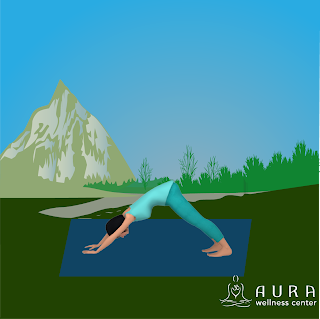Are you wondering if all the teaching you’re taking on is just too much? If you should take a clean break from teaching? In a prior article, I discussed ways to go about seeing if teaching more is sustainable, and how to go about doing that - but, alas, that can all go too far. We all need rest. No living organism can operate non-stop. Teaching yoga full or semi-full time can feel like that, like there’s always constant travel, things to do and plan, with no time or energy to attend to one’s own needs.
As yoga instructors, we offer a lot to our students. However, if we have nothing of ourselves left to give, then that’s what it is. It’s just not sustainable. Let’s look at this first in regards to how we can sense these signs of burnout, and then what to do about them. Through it all, yogic virtues and ways of acting - non-attachment, non-judgement, moderation, truthfulness, and more, can truly light the way. Om Shanti!
1. Burn-out - the physical, mental, interpersonal, and spiritual
Before one can make healthy changes, he/she must recognize the benefit - sometimes the need - to do so. With burn out, helped by stepping back one’s set of obligations (and little else), key signs are present. Physically, you are most often tired. You might find yourself oversleeping - your body telling you that you need more rest. There are issues with appetite. Headaches and digestive pains are common. Particularly with active people like yoga instructors, you may find your muscles often very sore.
You might feel like you’re simply low on physical energy - all too often. Mentally, you might feel like you’re in a fog. It’s hard to think through and sort out various class changes, subbing, sequencing, et cetera. You might even occasionally mix these things up, maybe even missing something to which you had committed. While teaching, you may find yourself mixing up cues, Sanskrit names, et cetera that would normally be no problem for you.
Spiritually, you may feel in a “funk”. Your fire, your passion, your love for teaching may feel faded. It’s a symptom of depression, but also of burnout, to lose the some amount of interest in things that once captivated your attention and passion. It might not be all of these experiences, perhaps rather a different kind of burnout - an exhaustion of your patience with constant travel, a realization of serious financial deficiency.
In your unique life situation (geographic area, etc), the amount of teaching that you’re trying to offer consistently just might not be as viable as you thought it might be. A wonderful thing about yoga instruction is its malleability; it doesn't have to be all or nothing, full-time or no classes at all. Let's take a look at that next.
2. Ok, so you’ve decided to step back - what’s next?
Let’s assume that you don’t want to leave teaching entirely, forever (though that may be the case for some people - something not to be judged). It might be the right answer for you to take a break - one month, two months, six months - whatever you feel will give you the distance you may need to come back refreshed and eager. You can use this time to delve deeper into your practice and/or yogic literature (old and new), or simply focus on another area of life that leaves you fulfilled.
Some teachers find long-term subs in cases of medical need, seasonal travel, maternity/paternity leave, and the like. This is certainly also an option if you’re looking to take a break from teaching. If you’re looking to have classes filled on a long-term basis, or scale back your classes, there are most likely many eager and willing candidates to take over (for some months or permanently). Studio sub lists, social media, and other networking can help find these teachers.
Should you take a break, or just step back? If it’s simple logistical difficulty, scaling back might be best. If it’s a deeper exhaustion and loss of passion for your teaching, you might truly benefit from a break. It offers the opportunity to come back with a rekindled enthusiasm for yoga instruction.
How do you decide which classes to let go? It’s certainly easy to develop attachment to our classes - sometimes partly out of force of habit, and inertia to step away from such routine. What can be deeper is a sense of pride and appreciation for what we’ve built with certain classes, especially if it’s a group of consistent, longer-term regulars.
Doing your best to practice aparigraha, non-attachment, can help. Perhaps these classes are the ones you hold on to. Other factors include travel, scheduling, location, and pay. If It’s truly hard for you to choose, you could even compare your classes on a point system, giving your classes a certain number of points on each of these aspects (and perhaps others), and tally it all up.
The classes with the highest numbers are the ones you keep. It makes the choice objective. Then do the legwork of sending notifications your decision to the appropriate party (or parties). Explain the situation thoroughly, but be respectful of people’s time and attention with brevity.
When at all possible, offer the professional courtesy of two weeks notice. Wishing Godspeed! Remember, as our practice teaches, no outcome is truly “good” or “bad” - all are learning experiences that contribute to who we are and whom we will become.
© Copyright – Aura Wellness Center – Publications Division
Please feel free to share our posts with your family, friends, colleagues, and favorite social media networks.







